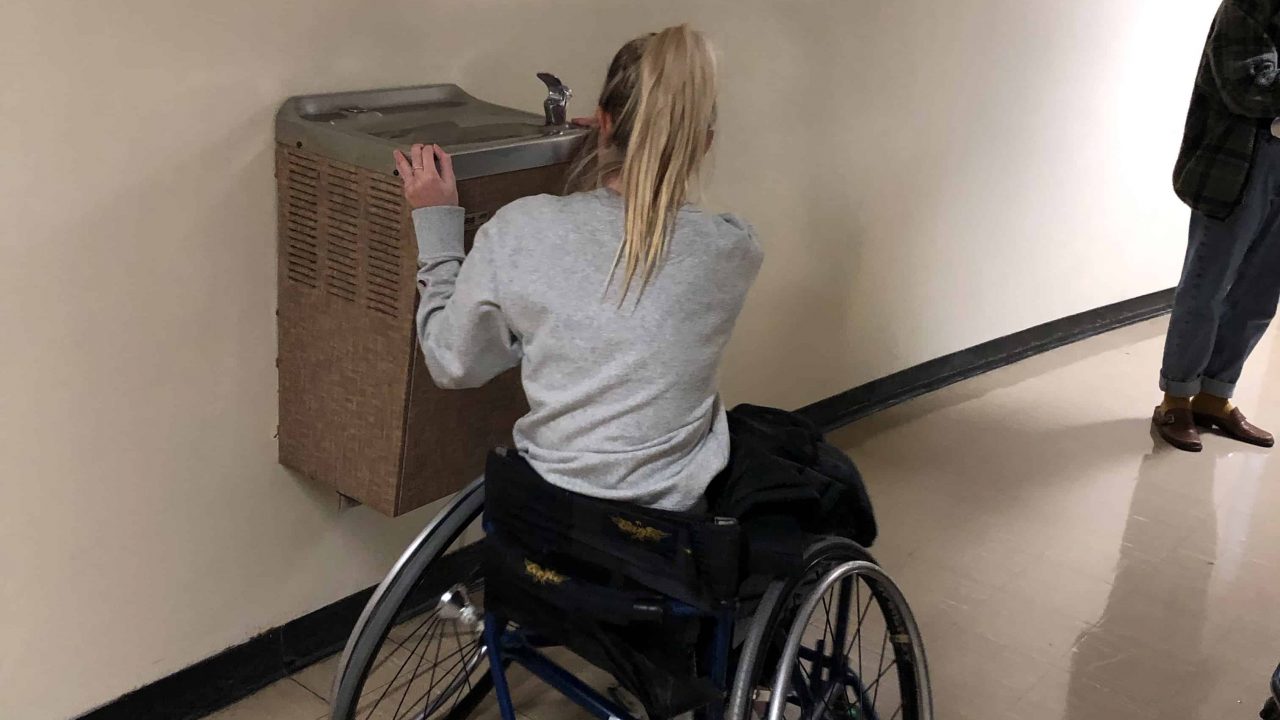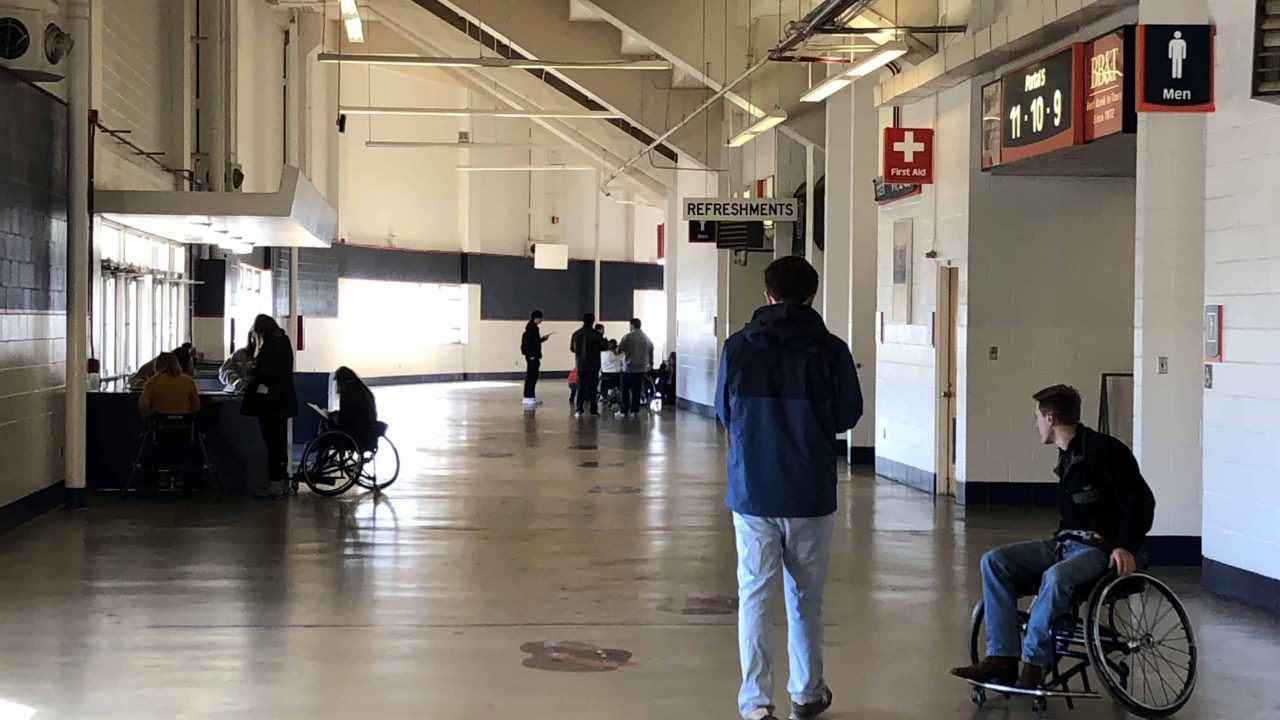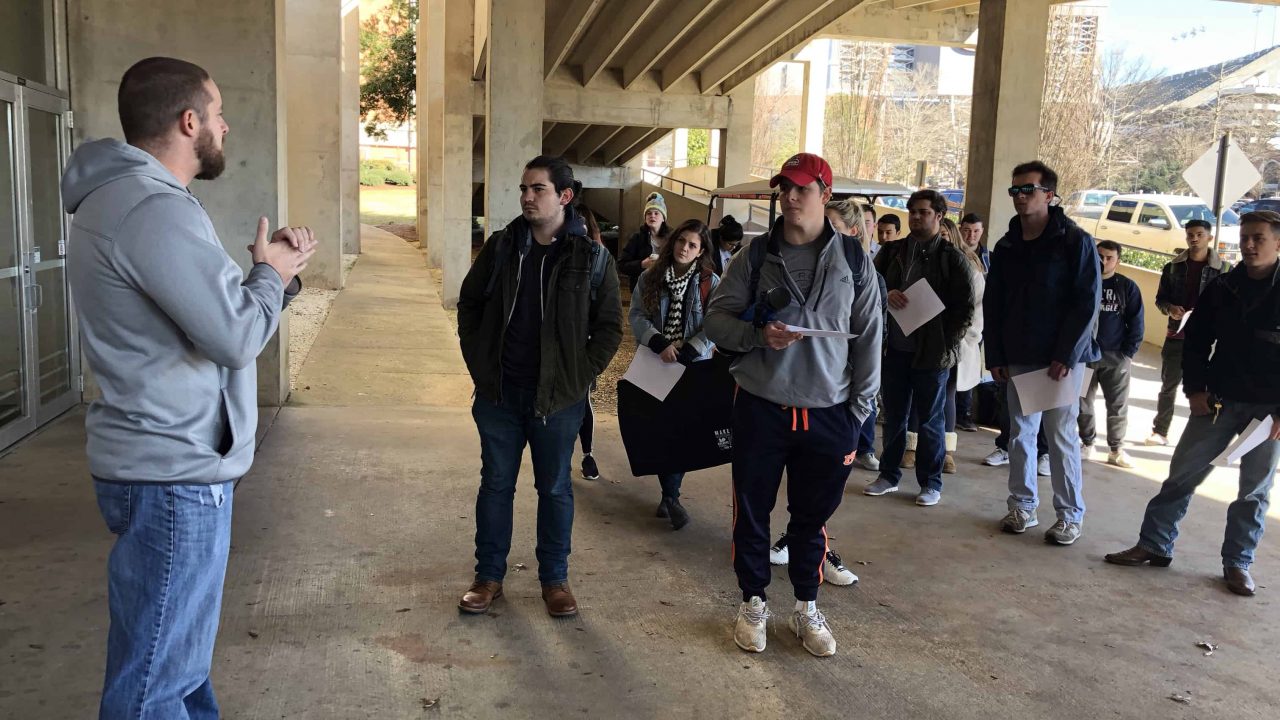Environmental Design Students Learn the Value of Universal Design

Professor Jennifer Smith’s Concepts and Practices class in Environmental Design visited the Beard-Eaves-Memorial Coliseum as part of an exercise on universal design practices. Students worked in teams, moving around the interior and exterior of the building and recording measurements and time. In this process, students discovered some inherent mobility challenges built into the 50-year-old structure. A key facet of the Environmental Design program, empathic design, brings the user into focus first and foremost. The students who participated in this activity gained a greater understanding of the unintentional obstacles inherent in common, older building practices.

Robb Taylor, Head Coach of the Auburn Wheelchair Basketball team, provided wheelchairs for students to use. Professor Smith defined a list of goals for the class which included taking measurements of doorways, threshold, ramps, and water fountains and recording other impressions in regards to surfaces/materials, slope, and travel time. Students worked in teams, with one student recording data and the other moving through the building in a wheelchair. Common challenges included passing through doors, finding elevators, and tackling the incline of ramps. Though some of the taller students had no trouble reaching the water fountain from a seated position, many students could not reach high enough to drink.


Following the exercise, Coach Taylor and a couple of his players answered questions from the class. “Good designers listen to their clients and use their knowledge and skills to meet client needs in thoughtful ways. This activity allowed Auburn students to experience client challenges and opportunities firsthand,” concluded Prof. Smith. Coach Taylor says the experience was a valuable one—particularly going forward: “Having the ability to partner and collaborate with 30+ design students is important to our student-athletes. We hope that the design students were challenged to see the world through the eyes of individuals with disabilities and that it shed some light on the obstacles faced on a daily basis. This real-life experience of pushing and maneuvering a wheelchair will go a long way towards helping the students look at better ways to make buildings and other items more accessible. We look forward to continued collaboration on future projects.”

See more in:
Outreach,
Student Work
Related people:
Jennifer Smith